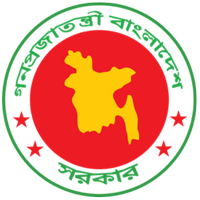Mapping Health Equity: GIS Revolutionizes Bangladesh’s EPI Program

In the realm of public health, few programs can boast the success of Bangladesh’s Expanded Program on Immunization (EPI). This initiative has undoubtedly been a triumph, saving countless lives through widespread vaccination efforts. Yet, amidst these accomplishments, a critical challenge persists: the existence of “zero-dose” and under-immunised children, especially in high-risk and hard-to-reach areas.
Recognising this gap, one of the EPI’s top priorities is identifying and reaching these vulnerable children and communities. To strengthen the immunisation system’s effectiveness, the World Health Organization (WHO) has proposed the integration of innovative technology, specifically Geographic Information System (GIS), into the EPI program.
So, what exactly is GIS, and how can it transform the EPI program in Bangladesh? Simply put, GIS is a tool that harnesses geospatial data to provide insights into the equitable distribution of vaccination sites, disease outbreaks, and trends within catchment areas. It considers crucial factors like high-risk areas, hard-to-reach populations, slum communities, and even the distance from health facilities to service delivery points. In essence, GIS technology has the potential to revolutionise EPI program planning, monitoring, and decision-making.
The journey towards implementing GIS in the EPI program in Bangladesh has been a collaborative effort. WHO Bangladesh Country Office, in conjunction with the WHO HQ GIS team and in collaboration with National EPI and MIS of the Directorate General of Health Service, has been at the forefront of this transformative initiative. Training sessions on the ArcGIS tool have been conducted for WHO-IVD network members and other relevant departments within WHO. This training serves as a valuable resource, equipping healthcare professionals with the knowledge and skills needed for prompt decision-making, especially during public health emergencies.
As part of this national coalition for immunisation, it’s heartening to see how this innovative technology has already made strides in the EPI program. Successful implementation has been witnessed in Sirajganj Sadar Upazila and Mymensingh City Corporation. Health Managers and field staff have undergone comprehensive training on GIS-based mapping and microplanning using ArcGIS. A pivotal workshop was organised to create a digital microplanning base map. Moreover, a national-level orientation session was held to share field experiences from these pilot areas.
Looking ahead, the vision for GIS in the EPI program is ambitious. By the end of 2023, the goal is to scale up GIS-based mapping and microplanning to encompass at least eight districts and four city corporations. This expansion promises to be a game-changer in ensuring that every child, regardless of their geographical location, receives the life-saving vaccinations they deserve.
In the end, the introduction of GIS into the EPI program in Bangladesh represents a giant leap towards achieving comprehensive immunisation coverage. It’s a testament to the power of technology and collaboration in addressing public health challenges, and as a journalist, it’s a story worth sharing with the world.
Source: World Health Organization





